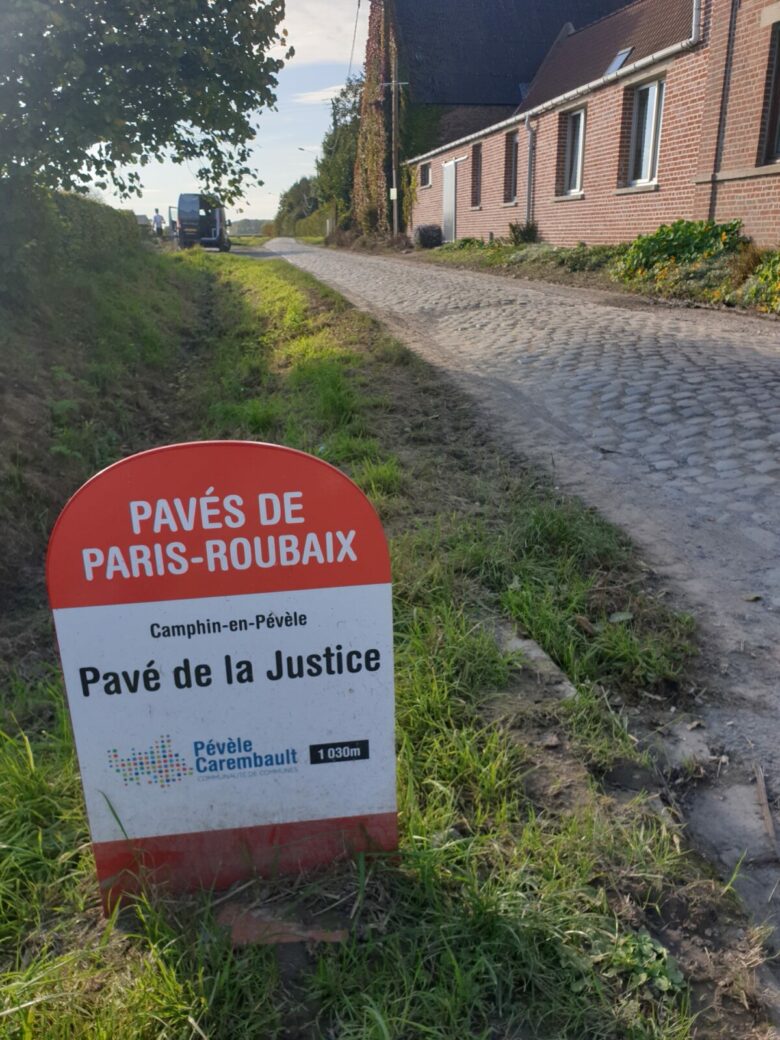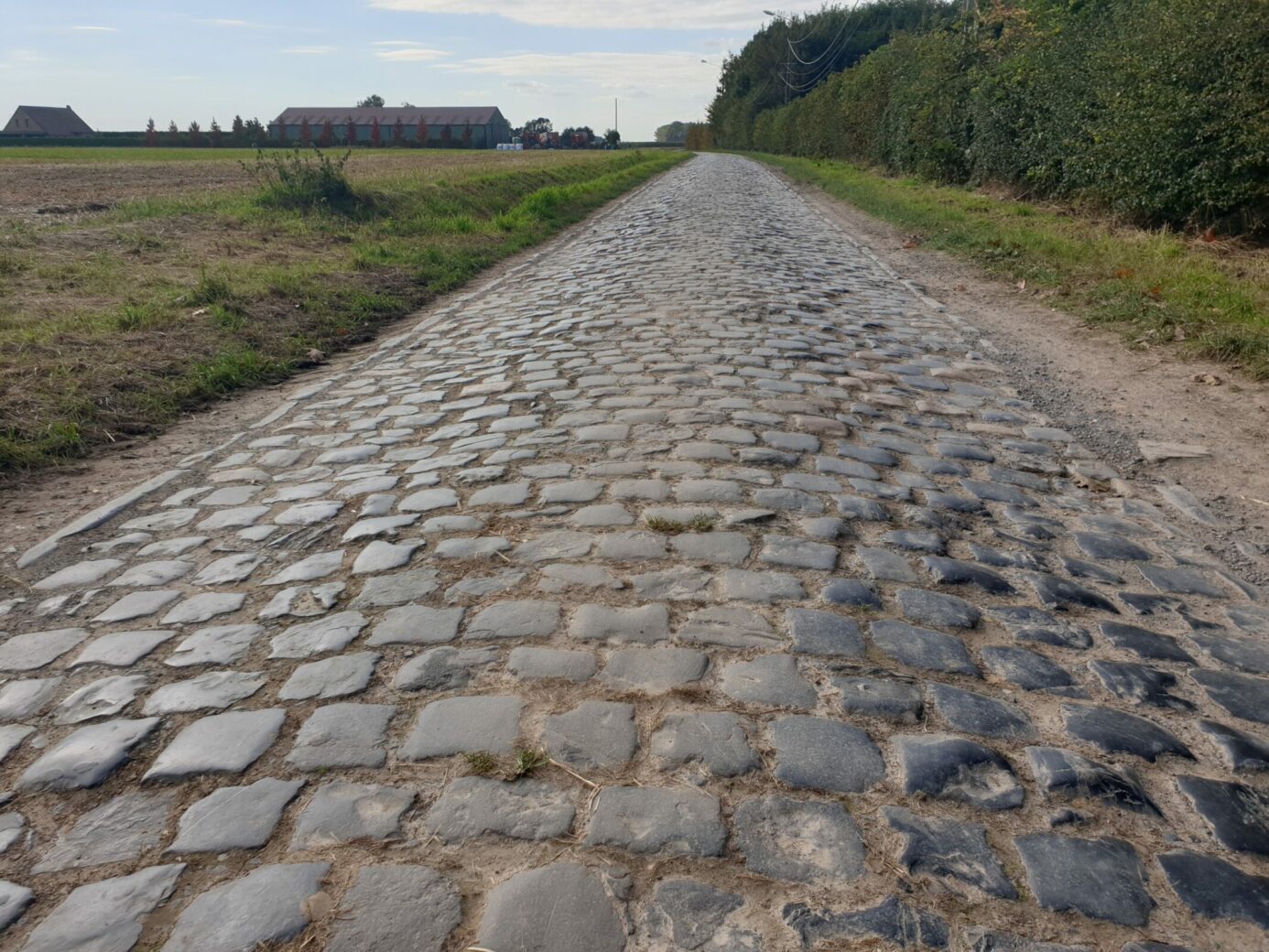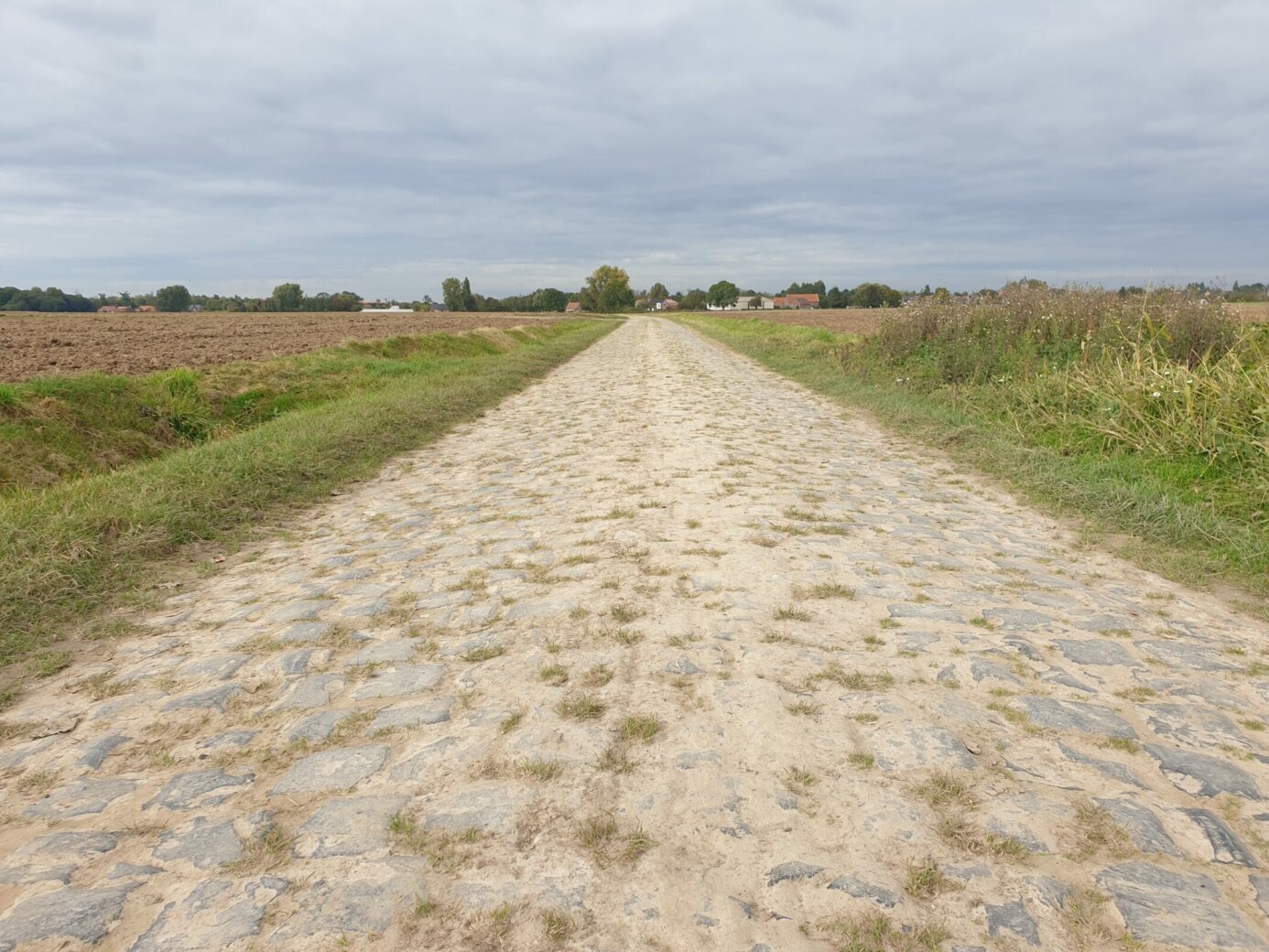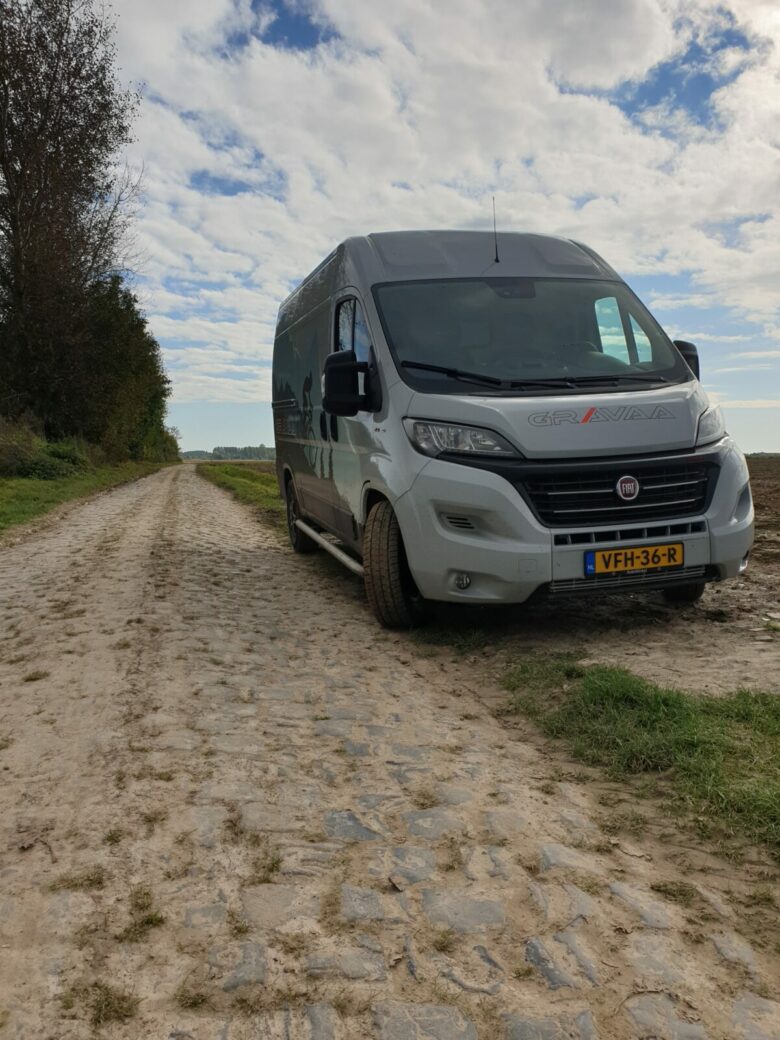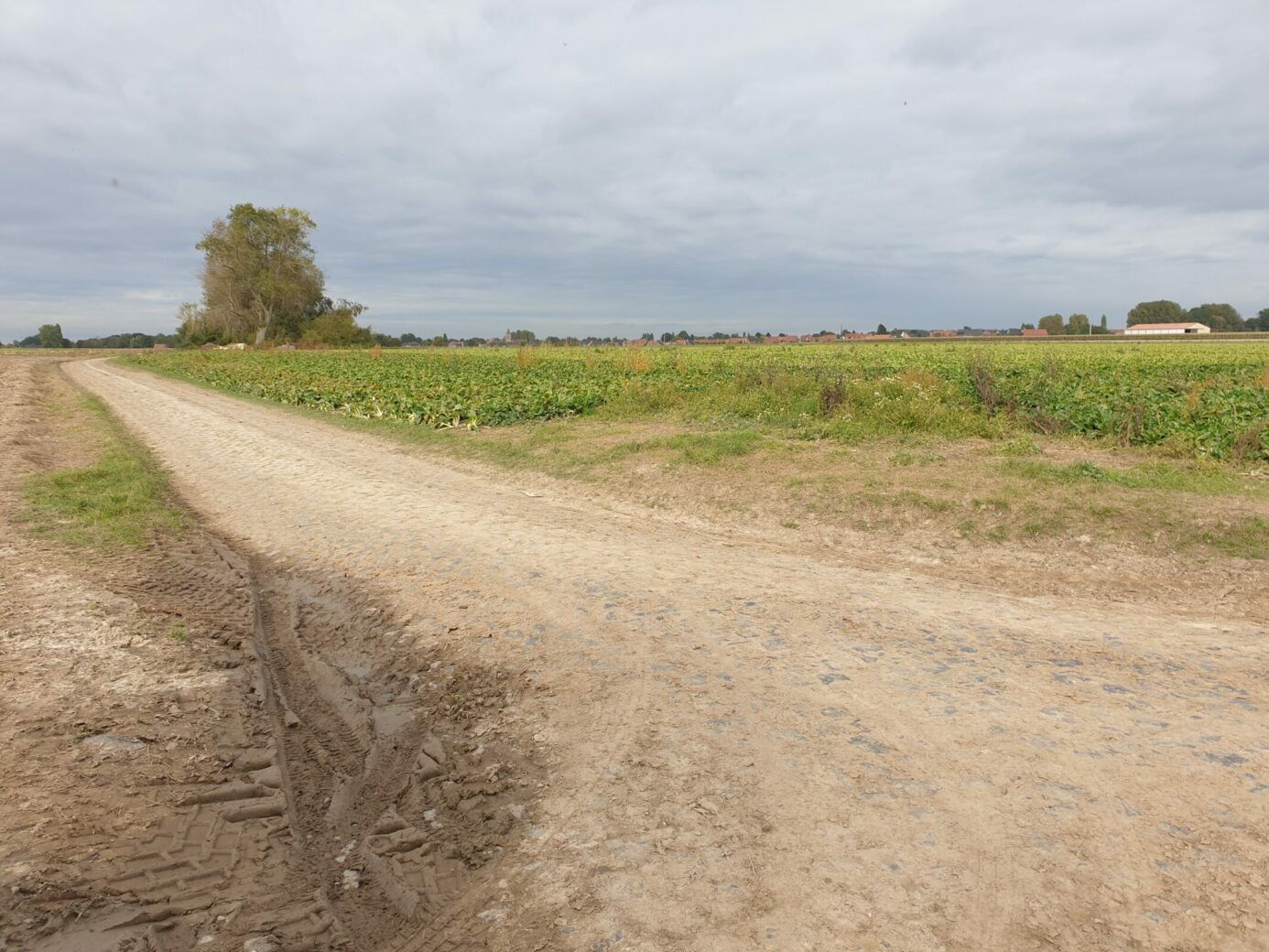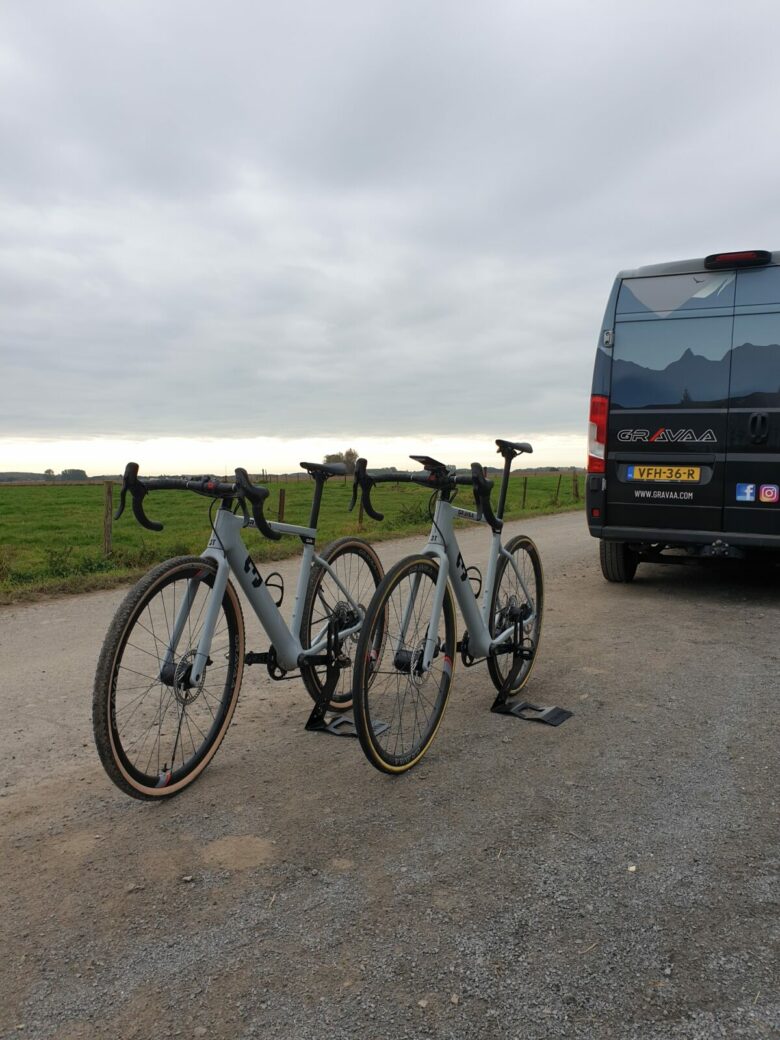One of the most iconic races in which tire pressure plays a key role, is Paris-Roubaix. In this race of over 250 km, the riders must ride over more than 50 km of cobbles. For our test, two test riders rode repetitively on one of the worst cobblestone sections of this race: pavé Camphin-en-Pévèle (total length 1.8 km). This is the section just before Carrefour de l’Arbre, which is often decisive for the race. Additional to the cobblestone section we rode on normal tarmac roads to study the effect of tire pressure on those roads as well.

In our test the overall power is measured using dual power pedals, while speed was measured by GPS. The rolling resistance is calculated from the difference between the overall power measurement and the air drag. The air drag has been determined by earlier tests, which have also been performed with our test bikes under fair and comparable wind conditions. During the test two riders repetitively rode laps, at a certain (fixed) speed and with a set tire pressure – which they changed from lap to lap. Below is an example of test data, with a tire pressure of 4.5 bar. Both total power and speed are given as function of elapsed time.

Based on all data, there is a significant increase of rolling resistance on cobblestones upon higher tire pressures. Our tests have found an optimum pressure regarding the rolling resistance on cobblestones. On the contrary – but not surprisingly – riding on smooth tarmac roads will be most optimal at higher tire pressures, considering rolling resistance only. Knowing (by experience) how difficult the cobble sections can be in terms of handling, especially at higher tire pressures, we expect that professional riders will choose a tire pressure of about 4 to 5 bar for the race – as a compromise between the tarmac and cobblestone sections. They generally hope for the best on the cobbles!
The below table provides our measures of rolling resistance on cobbles and tarmac. These data excludes air drag.

THE WINNING FACTOR IN PARIS-ROUBAIX?
The rolling resistance when entering a cobblestone section is very high. Rolling resistance suddenly becomes the dominant power loss factor. For instance, at high speeds (>35 km/h), the differences between cobbles and tarmac can easily exceed 150 W (!) to maintain that speed.
Setting for a fixed tire pressure of 4.5 bar during Paris-Roubaix, each cobblestone section gets penalized by more than 30 W for the elite women, and potentially by more than 50 W for the elite men – depending on rider weight and riding speed – compared to the optimal (low) tire pressure at the cobblestone sections. On tarmac, the penalty is less, but still there. Considering the complete Paris-Roubaix course, our KAPS technology can give a power advantage of about 20 W overall, and a peak power advantage of about 60 W, by simply adjusting the tire pressure to the surface while riding. The advantage of 60W will be true for the most difficult cobblestone sections. On top of this comes the better handling of the bike, more grip, more comfort, and the reduction of incidents (punctures, falling). This easily compensates for the weight penalty of 250 grams per hub and (relatively small) power consumption when the pump inside the hub is active (during inflation only).
The KAPS technology is all about winning this race!
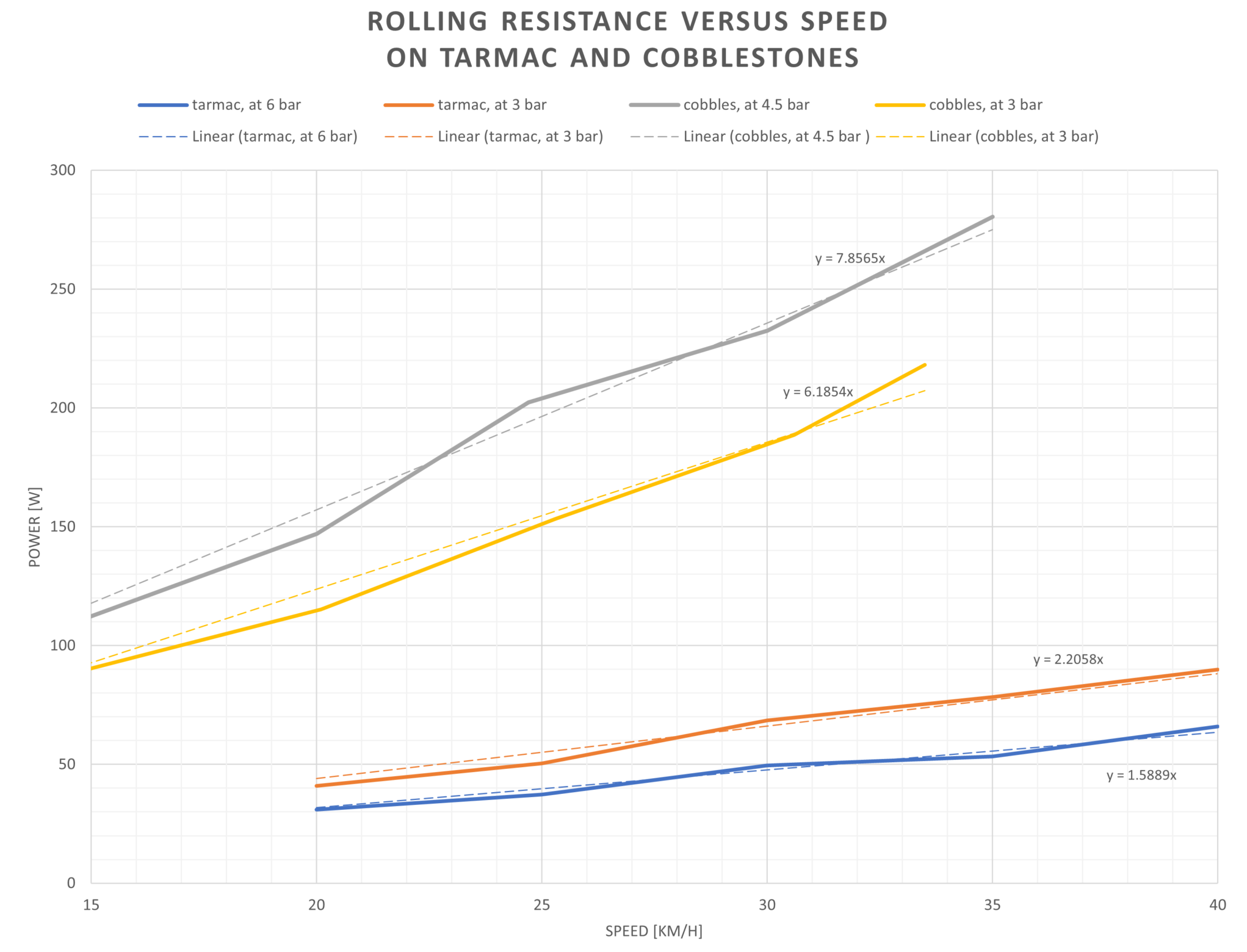
Want to know more or get more data?
We have more data on this subject, collected in a white paper. Want to read this and get in touch? Please fill out the form below and we’ll contact you.

